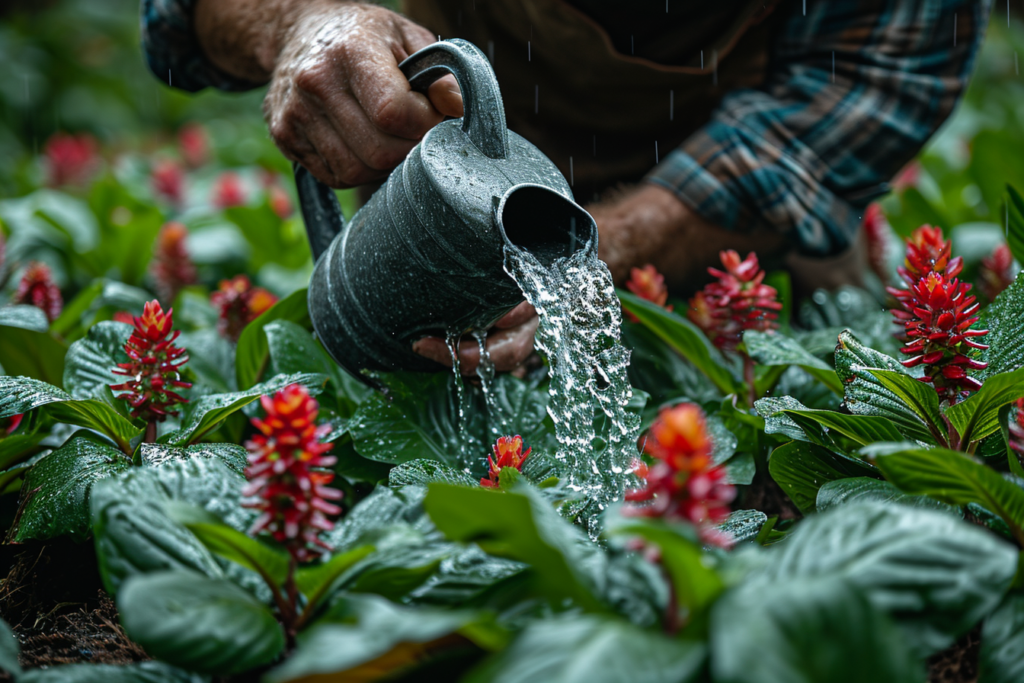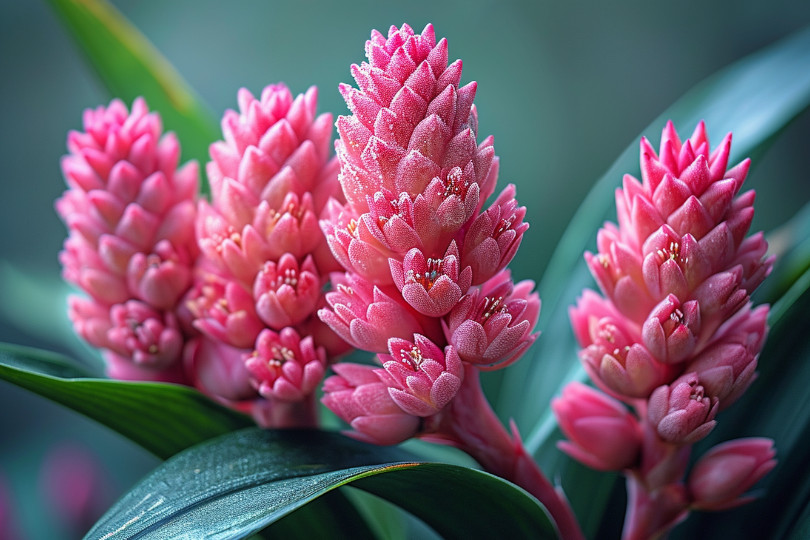The red ginger plant, scientifically known as Alpinia purpurata, is a captivating tropical plant that adds vibrant colours to any garden or floral arrangement. This plant is a true standout with its showy flowers and striking red bracts. In this article, we will explore the fascinating world of the red ginger plant, including its origins, characteristics, care tips, and more. Whether you’re a seasoned gardener or a beginner, this article will provide the knowledge you need to grow and enjoy this beautiful plant successfully.
Table of Contents
- 1. Introduction
- 2. Origins and Distribution
- 3. Appearance and Features
- 4. Cultivars and Varieties
- 5. Growing Conditions
- 6. Cities in the USA Suitable for Red Ginger Growth
- 7. Planting and Propagation
- 8. Care and Maintenance
- 9. Uses and Benefits of Red Ginger Plant
- 10. Frequently Asked Questions
- 11. Conclusion
1. Introduction
The red ginger plant is a tropical flowering plant that belongs to the Zingiberaceae family. It is native to Malaysia and is widely cultivated for its stunning flowers and decorative appeal. The plant is commonly referred to as red ginger due to its vibrant red bracts, which resemble the petals of a flower. However, the actual plant’s true flowers are small and white, located atop the bracts. It is also known as pink cone ginger, red cone ginger, red ginger flower or Malay ginger.
2. Origins and Distribution
The red ginger Alpinia purpurata plant is native to Malaysia and thrives in a warm and humid tropical climate. It is also found in other Southeast Asian parts, including Thailand, Indonesia, and the Philippines. Over time, it has been introduced to various regions across the globe, including Hawaii, Trinidad, Grenada, Panama, and Central American nations.
3. Appearance and Features

The red ginger plant is known for its striking appearance and showy flowers. It can grow up to 8 feet and features long, bright red bracts surrounding the tiny white flowers at the top. The bracts resemble feathers or cones, giving the plant its alternative names of ostrich plume and pink cone ginger. Its lush and green foliage and long, lance-shaped leaves add to its tropical appeal.
4. Cultivars and Varieties
The red ginger flower plant has a few notable cultivars and varieties that offer slight variations in colour and growth habits. One popular cultivar is the Jungle King, which has vibrant red bracts and is known for its vigorous growth. Another cultivar, the Jungle Queen, features pink bracts, adding a softer touch to gardens and floral arrangements. These cultivars are prized for their year-round blooming and make excellent additions to any tropical landscape.
5. Growing Conditions
To ensure the healthy growth of your red ginger plant, providing it with the right growing conditions is essential. Let’s explore the key factors to consider:
5.1 Soil
Red ginger plants prefer a well-draining, slightly acidic soil with a pH range of 6.0 to 6.5. Mixing the soil with organic things, such as compost, can improve its fertility and drainage. A good-quality, all-purpose potting mix can also be used for container-grown plants.
5.2 Light
Red ginger plants thrive in bright locations with partial shade. They prefer filtered sunlight or dappled shade rather than direct, intense sunlight. Placing the plant in front of a sunny window or a spot with light shade will provide the ideal lighting conditions.
5.3 Watering

Red ginger plants require regular watering to keep the soil evenly moist. Ensure the plant is watered sufficiently throughout the growing season and the soil doesn’t become completely dry. Be cautious not to overwater the plant, as this could result in the roots becoming waterlogged and suffering from root rot. Yellowing leaves are often a sign of overwatering.
5.4 Temperature
The red ginger plant is well-suited to warm and tropical climates. It can tolerate average room temperatures ranging from 65-75°F (18-24°C). Protecting the plant from freezing temperatures is essential in regions with colder climates, as it is not frost-tolerant. If you move the plant outdoors during the summer, bring it back indoors when temperatures drop below 50°F (10°C).
6. Cities in the USA Suitable for Red Ginger Growth
Red Ginger (Alpinia purpurata) is a tropical plant that thrives in warm and humid conditions. It is typically grown as an ornamental plant in tropical and subtropical regions. In the United States, it can be grown outdoors in areas that have a low or subtropical climate, such as:
- Miami, Florida
- Honolulu, Hawaii
- Key West, Florida
- New Orleans, Louisiana
- Brownsville, Texas
- Fort Lauderdale, Florida
- Tampa, Florida
- Houston, Texas
- Corpus Christi, Texas
- West Palm Beach, Florida
- Orlando, Florida
- Sarasota, Florida
- Naples, Florida
- Hilo, Hawaii
- Galveston, Texas
- Mobile, Alabama
- Charleston, South Carolina
- Savannah, Georgia
- San Diego, California (coastal areas)
- Los Angeles, California (coastal areas)
These cities have the right climate conditions for Red Ginger to grow outdoors, including warm temperatures and high humidity. In regions with colder or drier climates, Red Ginger is often grown as a potted or container plant that can be moved indoors during the colder months or kept in a greenhouse to provide the necessary warmth and humidity.
7. Planting and Propagation
Whether you’re planting your red ginger plant in the Ground or a container, proper planting techniques and propagation methods are crucial for its growth. Let’s explore the steps involved:
7.1 Planting in the Ground
When planting your red ginger plant in the Ground, choose a location that provides partial shade and has well-draining soil. Dig a hole slightly more significant than the root ball of the plant and put the plant inside the hole, ensuring that the top of the root ball is even with the adjacent soil. Fill the hole with soil, gently pressing around the plant. Water sufficiently after planting to settle the soil.
7.2 Container Gardening
Red ginger plants can also be grown in containers, allowing for more flexibility in mobility and placement. Select a container large enough to accommodate the plant’s root system and have drainage holes at the bottom. Fill the container with a well-draining soil mix and plant the ginger root ball at the same level as in its original container. Water thoroughly after planting, ensuring excess water drains from the container.
7.3 Propagation Methods
The red ginger plant has two methods of propagation – division and rhizome cuttings. The plant is separated into smaller sections to propagate through division, each containing a part of the rhizome and some attached roots. Rhizome cuttings can be taken by carefully cutting a section of the rhizome and planting it in a separate container or directly in the Ground. Both methods can bear good results given proper care and attention.
8. Care and Maintenance
Regular care and maintenance are crucial for your red ginger plant’s health. Let’s discuss some key aspects of caring for this tropical beauty:
8.1 Pruning
Pruning is essential to red ginger plant care, as it helps maintain its shape and size. Regular pruning also encourages new growth and improves airflow around the plant, reducing the risk of pests and diseases. Remove any dead or damaged leaves and spent flower spikes to keep the plant looking its best.
8.2 Fertilization
Red ginger plants benefit from regular fertilization to promote healthy growth and vibrant blooms. Use a balanced, water-soluble fertilizer diluted by half and apply it monthly during the spring and summer. It is essential to carefully go through the instructions mentioned on the fertilizer packaging to ensure the correct dosage is used.
8.3 Pests and Diseases
While red ginger plants are generally resistant to pests and diseases, they can occasionally face issues such as aphids and snails. It’s important to conduct frequent checks on the plant to detect any indications of pest invasion and implement necessary actions to prevent them. Proper watering and airflow around the plant can also help prevent diseases such as root rot.
9. Uses and Benefits of Red Ginger Plant
The red ginger plant has both ornamental and medicinal uses, making it a versatile addition to any garden or home. Let’s explore these uses in more detail:
9.1 Ornamental Use
With its vibrant red bracts and lush foliage, the red ginger plant is a popular choice for ornamental purposes. It adds a tropical touch to gardens, landscapes, and floral arrangements. The long-lasting cut flowers from mature plants can last up to 25 days, making them a favorite among florists.
9.2 Medicinal Properties
The red ginger plant has been used in traditional medicine for its potential medicinal properties. There are claims that it possesses anti-inflammatory and antioxidant qualities, and historically, people have used the rhizomes of this plant to cure different health conditions., including arthritis, digestive issues, and respiratory problems. However, further scientific research is needed to validate these claims.
10. Frequently Asked Questions
Can I grow red ginger plants indoors?
Yes, you can grow red ginger plants indoors. They need bright, indirect sunlight and high humidity.
How often should I water my red ginger plant?
Water your red ginger plant regularly to keep the soil consistently moist, but not waterlogged. It’s generally recommended to water it once a week, but this can vary based on your indoor environment.
Can I propagate red ginger plants from seeds?
Yes, red ginger plants can be propagated from seeds, but it’s more commonly done through division of the rhizomes (root-like stems) as it’s easier and faster.
How long do the flowers of the red ginger plant last?
The flowers of the red ginger plant can last for several weeks, often up to a month, making them quite attractive for extended periods.
Are red ginger plants toxic to pets?
Red ginger plants are considered non-toxic to pets, but it’s always a good practice to prevent pets from chewing on any houseplants as they can still cause digestive upset.
11. Conclusion
The red ginger plant is a stunning tropical beauty that adds a touch of elegance and vibrancy to any garden or floral display. With its showy flowers, striking red bracts, and lush foliage, it will surely captivate the attention of all who encounter it. The beauty of the red ginger plant can be enjoyed throughout the year with proper attention, suitable growing conditions and regular care. Whether you choose to plant it in the Ground or a container, the ginger plant flower is bound to bring joy and beauty to your outdoor or indoor space.

